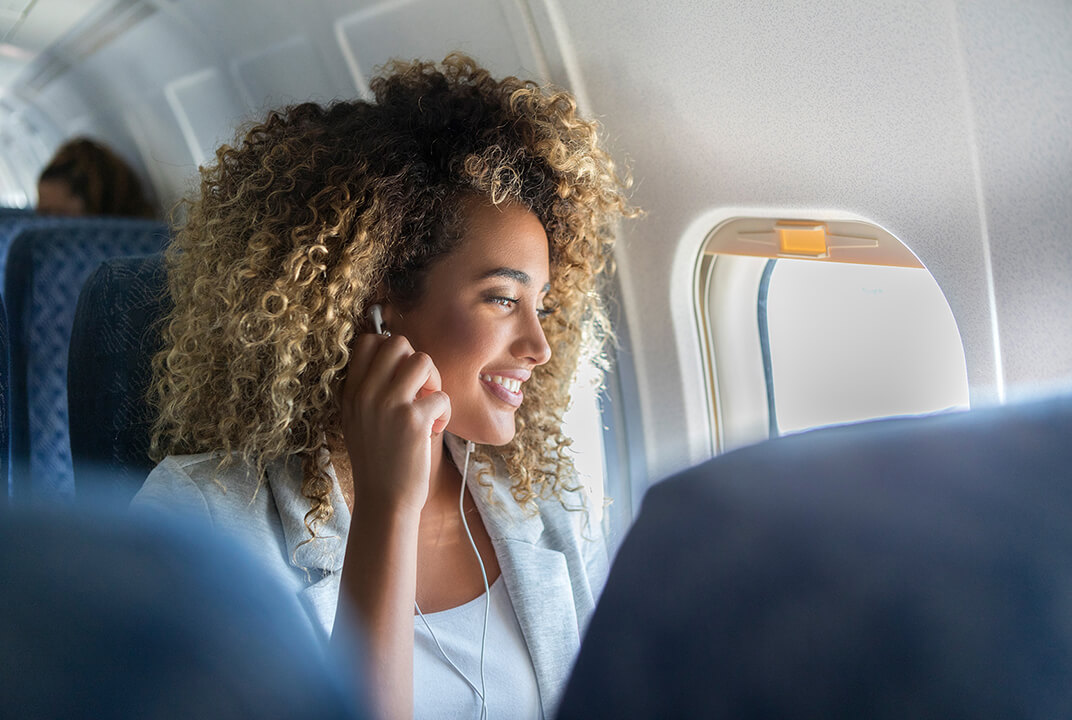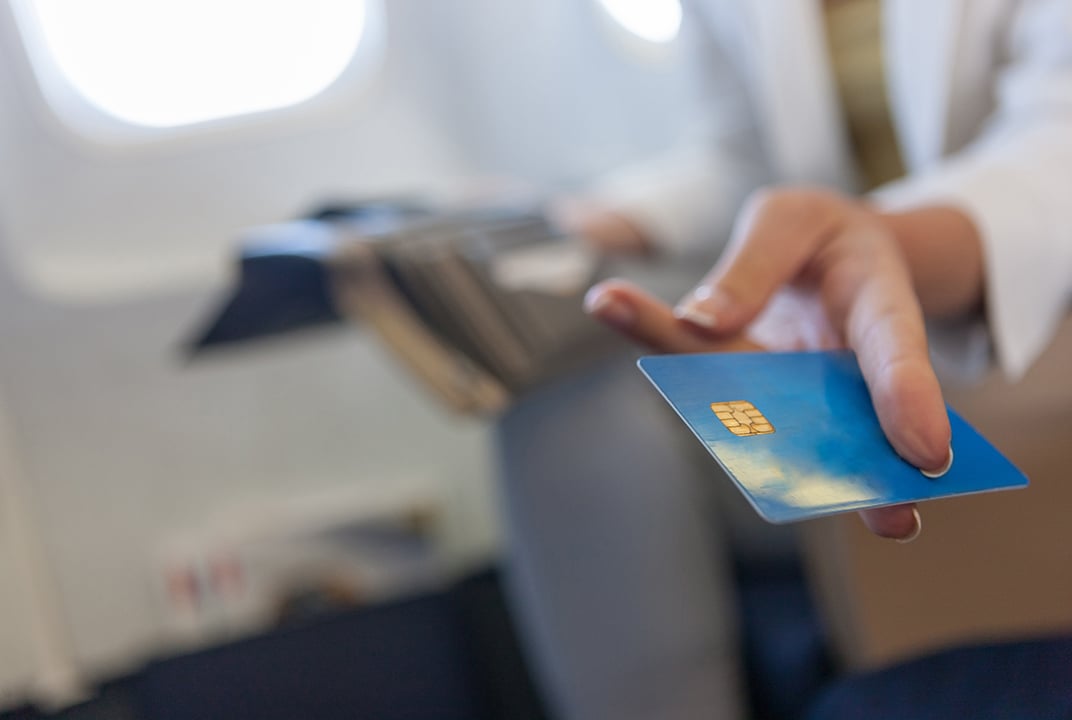Insight | Engagement critical to enhancing the inflight digital passenger experience
Engagement critical to enhancing the inflight digital passenger experience
Aviation
As airline passengers return to the skies, engaging them with a single digital onboard touchpoint is key to the commercial potential offered by digitalisation.
The more things change, the more they stay the same. Such a statement could actually be the best way to describe the aviation industry as it emerges from the events of the last two years and proactively continues building for the future.
Let’s explain. COVID-19 has, to a fair degree, left its mark on aviation. And yet, to a similar degree, many of the things that mattered before the global pandemic still ring true. And first among these truisms is that passenger experience remains resolutely everything.
What we’re seeing at the start of 2022 is passenger recovery strengthening. The International Air Transport Association (IATA) forecast that passenger numbers would increase to 3.4 billion in 2022 – similar to 2014 levels. Speaking at the turn of the year, Willie Walsh, IATA’s director general, struck an optimistic tone.
“Overall travel demand strengthened in 2021,” he says. “That trend continued into December despite travel restrictions in the face of Omicron. That says a lot about the strength of passenger confidence and the desire to travel. The challenge for 2022 is to reinforce that confidence by normalising travel.”
So what does it mean to normalise travel? At Inmarsat, we believe it relies on reinforcing confidence in the passenger experience and it’s become abundantly clear over the last two years that digitalisation is central to this premise. And not just digitalisation at predefined moments of the passenger journey but woven seamlessly into the fabric of experience. The digital inflight experience is no longer solely about watching video onboard; inflight entertainment has been superseded by inflight engagement.
The changing face of passenger expectations
The trend towards personalisation of the passenger experience is not new. Even before the pandemic this was a clear direction of travel. But COVID has undoubtedly hastened this process. One of the key aspects to returning passenger confidence that we have recognised over the last two years – as borne out in both our 2020 and 2021 Passenger Confidence Trackers – is that passengers want increasing control over their journeys.
From less friction when it comes to dealing with various touchpoints – both digital and physical – to onboard retail and personalisation, alongside an expectation of real-time destination information and tailored entertainment options, passengers want seamless access to content and web-based activities on their own devices.
David Whelan, an aviation expert at market analysts Valour Consultancy, recently highlighted how the pandemic has accelerated the need to digitalise the aircraft cabin. He believes that inflight connectivity (IFC), which will enable solutions such as wireless inflight entertainment (W-IFE), will be installed on almost three-quarters of the global narrow-body fleet by 2030, up from just over a third today.
“Many airlines see the installation of W-IFE as a central component of that process [the need to digitalise the aircraft], as it allows for touchless seatback pockets, showcasing inflight catering and retail options on passengers’ own devices. That’s a good example of how W-IFE solutions are moving away from traditional entertainment offerings, such as movies, music and TV shows, and encouraging different forms of ‘inflight engagement.’”
Niels Steenstrup, Inmarsat Aviation’s Senior Vice President of Inflight Connectivity Business, concurs. He believes that coming out of the pandemic it’s clear that digital passenger services have increased in importance.
“One of our airline customers has taken its airline magazine and created a digital version instead, so that it’s no longer sitting on the seat back pocket and passengers can access it on their own personal devices instead,” he says. “Another example is ordering food and drink from your own personal device and accessing entertainment in the same way. Everyone is much more comfortable communicating digitally and we’re witnessing this change in behaviours amongst all different passenger segments.”
These changing behaviours represent just some of the new ways that customers expect to be able to engage digitally during a flight. Expect to see an expansion in inflight ‘engagement’ solutions that cater for the passenger – such as digital inflight catering and destination content – and, in turn, have the potential to drive ancillary revenue for airlines.
Related services
Solutions to excite and assure passengers
Digitalisation has been critical to re-assure passenger confidence in the wake of COVID and has also acted as a catalyst for enhancing that all-important passenger experience.
Providing passengers with real-time information while in the sky acts as a buffer against last-minute changes. And it can also open up more pleasant browsing experiences of what to enjoy at their destination on arrival. Moreover, it also allows passengers to start planning – and booking – activities.
If this can be achieved through a comprehensive, customer-centric and cohesive inflight platform, it creates a myriad of opportunities for airlines. Car hire, hotels, tour bookings and the like can all be booked en route, opening up the prospect of increased personalisation too.
Digitalising the passenger experience is also great news for inflight catering. Pre-ordering via a digital menu can offer a tailored and efficient selection process that will also help to drastically reduce food waste.
As Niels Steenstrup acknowledged earlier, digital solutions that can be easily accessed via a passenger’s trusted personal device also circumvent the issue of shared items – airline magazines and duty-free guides – in seat pockets. This not only means less touchpoints for passengers – contactless journeys being one increased desire to come out of COVID – but can revitalise the idea of duty-free retail. A single and engaging platform enabling tailored e-commerce and destination shopping services, for example, can provide a more relevant inflight experience.
This is a trend that Nathan Clapton, Inmarsat Aviation’s Vice President of Inflight Media, believes will only continue to develop and transform passenger experience. “Contextual e-commerce is simply the next step for passengers in finding things out that are relevant to them, their lives and their journeys,” he explains.
“Over the next few months and years, we anticipate that app developers and service providers will use connectivity to power up the experiences they provide to passengers. That could be live payments, accessing databases on the ground to make services more personalised, it could be a range of different features that passengers come to expect when using the internet every day, but have been really difficult to do on the aircraft - up until now.”
E-commerce, advertising and data: commercial solutions for airlines
Bringing all the above together means it’s an exciting time for airlines. The commercial opportunities that a robust and reliable IFC solution offer were being discussed pre-COVID – air travel after all has long presented advertisers with a uniquely ‘captive’ audience.
Our ground-breaking Sky High Economics reports – conducted by the London School of Economics (LSE) before the pandemic – pointed to broadband-enabled e-commerce being worth nearly $7 billion in airline revenues by 2035, from a total estimated market of $53 billion.
The potential of e-commerce remains undiminished in the face of these enhanced customer expectations. The opportunity to monetise ancillary revenues through third party partnerships such as sponsors, advertisers, retailers and affiliates has never been stronger.
There is the opportunity for airlines to generate revenue from advertisers on a revenue-sharing basis, by offering tailored adverts and content specific to routes, destinations and to target passengers via the onboard Wi-Fi system. Increasing amounts of sophisticated passenger data will act as a catalyst for personalisation.
Advertising is a rich part of this mix too. Broadband-enabled advertising – encompassing page impressions, click-through in both paid and free connectivity options, and interrupting-adverts within a free access broadband model - could yield an additional $6 billion for airlines by 2035.
For airlines that are already transitioning towards a retail mindset, IFC tools and services can further assist them on this journey. By providing an understanding of passenger data and making it work for airlines, alongside third-party relationships, there is the chance to present personalised offers and communications that speak directly to passengers and increase the likelihood of conversion.
A purpose-built connectivity platform delivering inflight digital engagement
In this brand-new world where passenger experience remains unparalleled, but delivering enhanced experiences means engaging the passenger as much as entertaining them, it’s vital that airlines deliver solutions that are simple and seamless.
What passengers want is a platform delivered directly to their trusted personal devices and an engaging user interface hosting a myriad of inflight services, such as Wi-Fi access, food and beverage ordering, online shopping, entertainment, flight and destination information, contextual content and much more.
Our new smart, customer-centric and cohesive platform, OneFi, is built with connectivity at its heart to enhance passengers’ digital experience. It’s designed to be optimised over time and enables airlines to capitalise on the growing trend towards inflight engagement.
Passenger experience is changing – as are the opportunities to monetise it; and ensuring that business practices keep pace with evolving passenger needs remains as critical as ever for airlines. Their success in the new environment rests upon it. The time to act is now.


